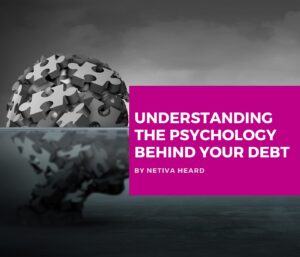The pandemic caused more havoc in the world than just a health scare. While it’s definitely scary for anyone, especially those at high-risk, millions of Americans suffer financially because of the virus and not because they got it. The economic shut-down caused more than 33 percent of Americans to lose as much as 25 percent of their income.
With almost 40 percent of lenders stating tighter restrictions are necessary moving forward, proponents of the FICO Resilience Score are telling Americans not to worry.
What is the FICO Resilience Score and will it help you? Let’s explore how it works.
What is the FICO Resilience Score?
Your credit score is a number ranging, on average, from 300 – 850. The higher the number, the better your credit and the better your chances of loan approval with great terms become.
The FICO Resilience Score is a number ranging from 1 – 99 and the lower the number the better. This score measures your likelihood of making it through a financial crisis (like the pandemic) without financial destruction.
What FICO measures is your ability to pay your debts as agreed no matter the status of the economy. The more stable your finances are throughout your credit history, the more resilient you are. It is not meant to replace our standard FICO scores, but to be used as a tool alongside it.
But is it the magic wand everyone predicts?

You still need to meet the credit score guidelines of each lender. In other words, every lender still has a credit score minimum. The difference, now, is the use of the resilience score.
For example, let’s say you have two borrowers with 620 credit scores – they aren’t exactly ‘A’ borrowers. Lenders will look at both borrowers with skepticism but may consider lending to them at higher rates or lower loan amounts.
Looking at the credit scores alone, lenders would think they are likely to default and greatly limit how much they can borrow or greatly inflate the cost. With the addition of the resilience score, though, lenders can tell how likely you are to pay your bills no matter the economic events.
Let’s say one borrow has a 620 score with a low resilience score (closer to 1) and the other has a high resilience score (closer to 99). Lenders would be more likely to approve the borrower with a lower resilience score.
What Affects the Resilience Score?
You don’t have to do anything different to get a higher resilience score – it uses the same factors as the credit scoring model, but pays particular attention to
- A consumer's credit mix (mixture of installment loans and credit cards),
- Credit card balances (the lower the better),
- Number of active accounts (the fewer the better),
- Number of inquiries (the lower the better).
The FICO Resilience Score will then compare your credit data to credit behaviors from consumers with similar credit profiles during the Great Recession (2007-2009) and a few years after the Great Recession (2012-2015), in order to determine how resilient you would be during times of economic stress.
Does this mean you should totally switch up how you are manageing your credit?
Not necessarily. Lenders are still using the same criteria to approve consumers; so as long as you do the following, your resilience score will reflect positively:
- Pay your bills on time
- Keep your outstanding balances low
- Keep a long credit history (don’t close old accounts)
- Don’t apply for new credit unless you absolutely need it
Does this mean if you pay your bills on time you’ll automatically look good? Not necessarily. First, lenders are slowly adopting this new method – many haven’t even considered it yet. Second, your largest factor is the credit utilization rate or how much debt you have outstanding compared to your credit limit.
If you regularly have a lot of debt outstanding, you’re a high risk during a financial crisis. On the other hand, if you don’t have a lot of debt outstanding, you show financial responsibility and a higher chance of making it through a financial crisis without defaulting.

Let me reiterate, the FICO Resilience Score uses the same data that is currently being used to create your regular FICO score. In other words, it doesn’t help those without any credit. You can’t have a resilience score if credit bureaus can’t measure your creditworthiness and financial abilities.
If you don’t have any credit, you need to build credit the right way. The FICO Resilience core builds your credibility once you have a lengthy credit history, but establishing that credit history is the first hurdle.
Bottom Line
Don’t focus on the FICO resilience score. If anything, think of it as the icing on the cake once you establish good credit patterns. If you pay your bills on time and keep your credit balances low, lenders won’t need the resilience score to determine your creditworthiness – your credit score will speak for itself.
For help Soaring Your Credit Scores, visit SoarMyScores.com!
Hope this helps!









